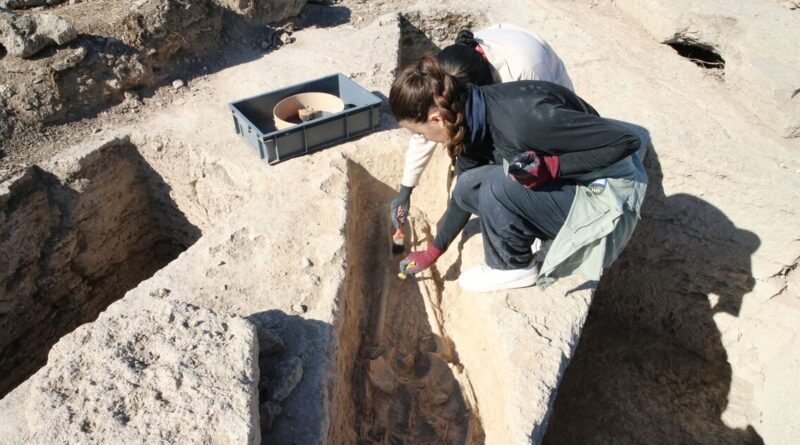Archaeology breakthrough ‘proves four Bible chapters right’ | History | News
Archaeologists in Turkey have uncovered a vast ancient burial site that some believe has confirmed key details from four chapters of the Bible. The discovery, made near Mount Honaz in western Turkey’s Aegean region, is believed to mark the location of the lost city of Colossae, a place mentioned by St Paul in his Epistle to the Colossians.
The letter, which spans four chapters of the New Testament, was written by St Paul to one of the earliest Christian communities while he was imprisoned as he tried to convince them to maintain their faith in Christ. The archeological dig, led by Barış Yener from Pamukkale University, uncovered around 60 tombs dating back more than 2,200 years, which researchers say offers physical evidence of the world described in those chapters, providing new insight into how people in Colossae lived and worshipped before and after the rise of modern-day Christianity.
The site includes trough-shaped tombs that have been carved into the natural rock formations rather than built from scratch. They were uncovered earlier this month in a dig on October 4.
But inside the tombs, researchers discovered a large collection of artefacts, including terracotta ceramics, glass bottles, oil lamps, coins, sandals, and personal belongings of the dead. Charms, amulets, and stones believed to offer protection or healing were also found, suggesting that spiritual and magical beliefs played an important role in daily life long before Christianity spread through the region.
“The findings reveal how much the people of Colossae valued magic, talismans, and objects believed to offer protection,” Mr Yener said. “These pre-Christian practices provide essential context for understanding the religious environment in which the early Christian community emerged.”
The layout and wealth of the grave goods are also helping experts learn more about the city’s social and economic structure at such an early age of civilization, with various placements of the tombs seeming to indicate different statures or classes.
According to Mr Yener, the tombs were cut into the rocky hillsides to preserve nearby farmland, which was used for agriculture to help feed its people.
He added: “They sought to use the travertine rock formations efficiently, since agriculture, particularly grain production, was practiced at the time. To preserve arable land, they designated the rocky travertine areas as burial grounds.”
Colossae was once a thriving trade centre known for its wool and textiles. It later declined after a series of earthquakes in the first century AD and was eventually abandoned by the eighth century. Now the remains sit just outside the modern-day town of Honaz, not far from the city of Denizli.





